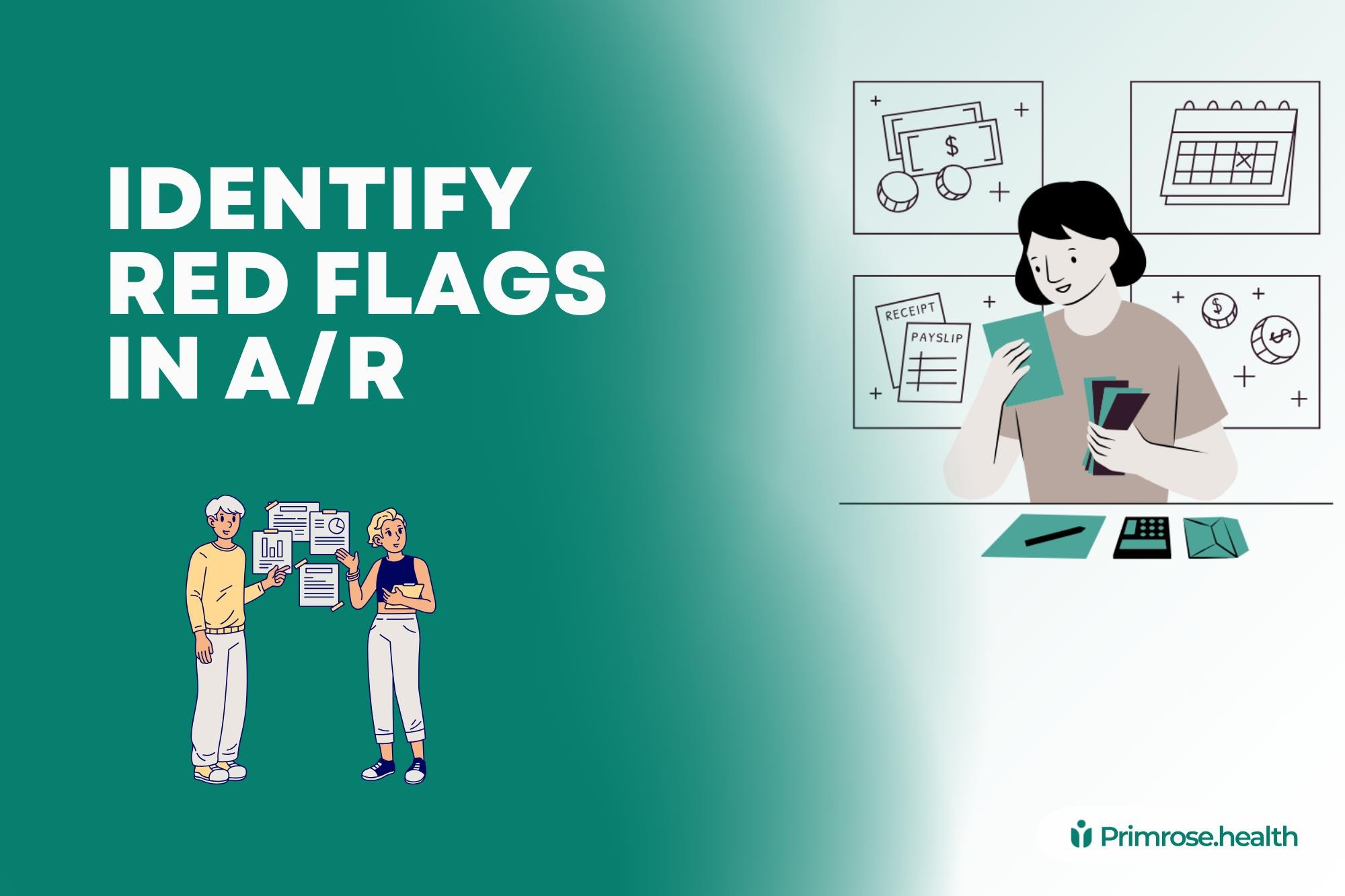Have you ever considered that unpaid claims can drain your medical practice’s revenue? Accounts receivable is the payment owed to your healthcare practice for the products and services delivered. Effective AR management is the method of ensuring that insurances settle their dues consistently on time. Most healthcare providers are concerned about whether their billers are collecting the dues effectively. Having integrated billing/EMR software, skilled billers should set aside 35%-50% of their time to manage unpaid claims in AR. Let’s take a look at a few red flags in medical practice AR management.
Increased Denial Letters
Denial letters are like hints about your practice’s money health. Getting lots of denial letters or explanations of benefits (EOBs) with no payments? It’s a signal that something’s off in your payment process. Denial letters can occur due to:
- Inaccurate or missing patient information (name, DOB, insurance ID)
- Lack of medical necessities
- Duplicate claims
- Errors in medical coding
The denial letters tell you to look closer at your practice’s earnings and what’s owed. If you’re seeing a higher number of denial letters or EOBs with no payments, you need to focus on AR management.
Failing to Collect Enough Payments
Poor AR Management will cause a revenue dip. If your healthcare clinic is collecting fewer payments, there might be some issues with your account receivables. Improper AR management will delay claim processing and increase the number of denial letters.
However, there’s an easy method to verify. Pull up your healthcare business’s last 6 months of bank statements instead of relying on the billing software.
| Month | Total Revenue | Total Payments Collected |
| January | $100,000 | $90,000 |
| February | $95,000 | $85,000 |
| March | $90,000 | $80,000 |
| April | $85,000 | $75,000 |
| May | $80,000 | $70,000 |
| June | $75,000 | $65,000 |
From this table, we can say three things:
- The total payment collection decreases over each month, and so is the total revenue of a healthcare provider.
- AR management is poor
- This indicates that the clinic cannot collect payments from their patients due to poor AR management.
If you cannot correspond the revenue decline to the number of visits, there’s likely a billing issue. Contact professionals in case of any suspicion.
A/R is Increasing
A/R in healthcare can increase and pile up for numerous reasons. Delayed or denied reimbursement from insurance companies and mistakes in medical coding will lead to outstanding payments. In addition, if patients don’t settle their dues promptly, A/R will start piling up.
To verify this, create a chart of monthly account receivables of your healthcare. If your clinic is large and sees a stable number of patients every month, then A/R should stay constant. If the number is increasing every month, there might be an issue.
| Month | Accounts Receivable (A/R) |
| January | $10,000 |
| February | $20,000 |
| March | $32,000 |
| April | $40,000 |
| May | $45,000 |
| June | $60,000 |
This table reflects A/R of a healthcare practice is piling up due to delayed or unpaid payments, potentially affecting the clinic’s cash flow. It could also mean that the denials are increasing and you need to identify and fix them.
Also Read: How Can a Physician Analyze Their A/R?
Amount Over 120+ Days is Higher
A higher A/R amount in the 120+ days bucket would indicate a severe financial scenario. Collecting payments beyond this timeframe would be harder. Inefficiency in the billing and collection process contributes to high A/R aging, which would require immediate attention.
You can get an A/R report either from your biller or your billing system to cross-verify. The reports should showcase the amount of money sitting in each 30-day bucket.
| Age Bucket | Amount | Percentage of Total A/R |
| 0-30 days | $40,000 | 40% |
| 31-60 days | $30,000 | 30% |
| 61-90 days | $3,000 | 3% |
| 91-120 days | $2,000 | 2% |
| 120+ days | $25,000 | 25% |
| Total | $100,000 | 100% |
The above table indicates that you have $100,000 total A/R outstanding, out of which $70k is your current A/R, and the 120+ day bucket comprises 25% of the total A/R.
The amount that should reside within the 120+ bucket will vary from one practice to another and also depends on location, specialty, services, and other parameters. Usually, once the amount in the 120+ bucket crosses the 15% mark, the overdue payments would require urgent attention and resolution. While this doesn’t necessarily mean something is going wrong, you still need to search for the reasons. Monitor the 120+ bucket for the next few months to evaluate steadiness.
Summary
So, where does this leave us? If you’re not noticing any of the warning signs mentioned earlier, does that mean your biller is effectively managing your A/R? As we’ve seen, assessing overall revenue and outstanding receivables can boost A/R management, as we’ve seen. However, there are some things providers need to consider:
- Using these methods might not be straightforward for new practices, rapidly growing ones, or those changing.
- Billers could adjust amounts to artificially lower A/R
- Experienced billers might manipulate software to hide issues.
- In cases of uncertainty, seek expert advice and keep an eye on billing practices to maintain financial stability.
At Primrose, we believe each healthcare provider has its medical billing requirements. Our streamlined billing process will help you with accounts receivable and end-to-end billing.
